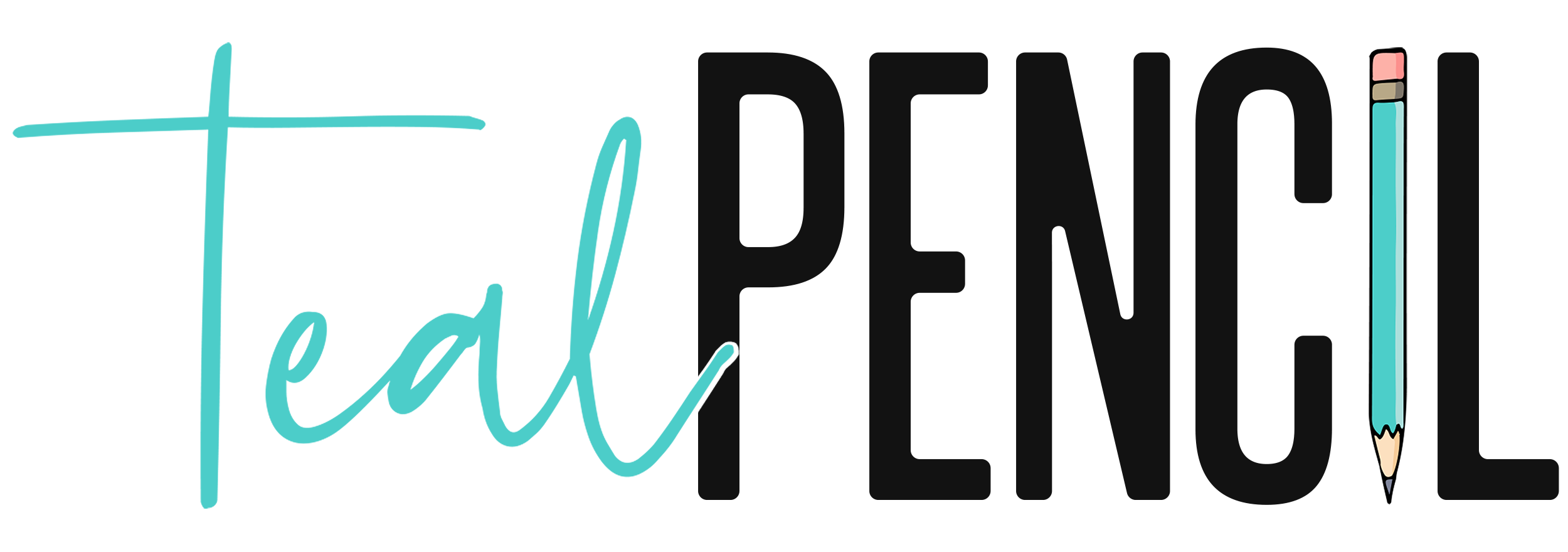There are some skills that can’t be covered enough. Summarizing fiction stories is always one of those skills. Even when students properly summarize various parts of a story, they can always use practice fine-tuning which details to include (and exclude). Because of this, summarizing was never a skill that got checked off our list. I made it a point to incorporate it into as many lessons as possible, whether we were practicing verbal summaries, or writing more formal summaries. One thing I quickly figured out is how to use this skill practice so that it has two returns … use student summaries to add seasonal decorations to your classroom!
Start by choosing any thematic fiction story that lends itself to summarizing (a clear timeline of events and/or distinct problem or mystery that is resolved, etc.). Read the story aloud to your students and have them work in partners to summarize the most important parts of the story before asking them to create their own individual written summaries.
So … what are the best St. Patrick’s Day read alouds to support this skill? I could write ten more blog posts on this topic alone. To narrow the focus, let me highlight one of my favorite children’s book authors, Eve Bunting … who also happens to be the author of some of the best St. Patrick’s Day read alouds. Here are three of her books I love using to teach summarizing.
Green Shamrocks – Rabbit grows a pot of shamrocks to wear to the parade. It takes him all spring to do this. But after all his hard work, he wakes up to find the shamrocks are missing. He sets out to discover who took them so he can get them back before the parade. He makes an unlikely friend in the process.
St. Patrick’s Day in the Morning – This story is about a young boy named Jamie who wants to prove that he is not too small to march in the St. Patrick’s Day parade. With descriptive writing, use of figurative language, and a theme of determination, this is a read aloud that lends itself to enriching discussion.
That’s What Leprechauns Do – This book tells the story of leprechauns Ari, Col, and Boo who are in a hurry to move a pot of gold before a new rainbow appears after an impending storm. Despite their hurry, they get caught up making mischief along the way. (This is an all-time favorite book of mine, and we have a Rounding Out the Read Aloud unit to go along with it. Click HERE to check it out.)
If you are interested in trying festive summaries in your class, we have created a FREE St. Patrick’s day-themed download that you can grab by clicking HERE. This download offers four approaches for a festive summary, depending on what your students need.
⇢ Somebody, Wanted, But, So, Then: Ask students to summarize the most important parts of a story using the SWBST format by filling out the mobile topper and the first sheet of smaller clovers.
 ⇢ Somebody, Wanted, But, So, Then PLUS Additional Fiction Elements: Ask students to summarize the most important parts of a story using the SWBST format by filling out the mobile topper and the first sheet of smaller clovers. Then, use the second set of smaller clovers and ask students identify the point of view, author’s purpose, genre, theme (if applicable), and to rank the book out of five stars. Display them all together by hanging below the mobile topper.
⇢ Somebody, Wanted, But, So, Then PLUS Additional Fiction Elements: Ask students to summarize the most important parts of a story using the SWBST format by filling out the mobile topper and the first sheet of smaller clovers. Then, use the second set of smaller clovers and ask students identify the point of view, author’s purpose, genre, theme (if applicable), and to rank the book out of five stars. Display them all together by hanging below the mobile topper.
 ⇢ Beginning, Middle, End: Use the large clovers and ask students to summarize the most important events from the beginning, middle, and end of the book.
⇢ Beginning, Middle, End: Use the large clovers and ask students to summarize the most important events from the beginning, middle, and end of the book.
 ⇢ Beginning, Middle, End, PLUS Additional Fiction Elements: Use the large clovers and the second set of smaller clovers to have students summarize the beginning, middle, and end of the story, as well as identify the point of view, author’s purpose, genre, theme (if applicable), and to create a ranking out of five stars. Display them all together in one long mobile.
⇢ Beginning, Middle, End, PLUS Additional Fiction Elements: Use the large clovers and the second set of smaller clovers to have students summarize the beginning, middle, and end of the story, as well as identify the point of view, author’s purpose, genre, theme (if applicable), and to create a ranking out of five stars. Display them all together in one long mobile.
 Once students have written their summaries, they can color and/or decorate their pieces, cut them out and string them together to hang from walls and/or ceilings.
We hope you love festive summaries as much as we do! Tell us what other St. Patrick’s Day books are great to use for summarizing.
Once students have written their summaries, they can color and/or decorate their pieces, cut them out and string them together to hang from walls and/or ceilings.
We hope you love festive summaries as much as we do! Tell us what other St. Patrick’s Day books are great to use for summarizing.

 ⇢ Somebody, Wanted, But, So, Then PLUS Additional Fiction Elements: Ask students to summarize the most important parts of a story using the SWBST format by filling out the mobile topper and the first sheet of smaller clovers. Then, use the second set of smaller clovers and ask students identify the point of view, author’s purpose, genre, theme (if applicable), and to rank the book out of five stars. Display them all together by hanging below the mobile topper.
⇢ Somebody, Wanted, But, So, Then PLUS Additional Fiction Elements: Ask students to summarize the most important parts of a story using the SWBST format by filling out the mobile topper and the first sheet of smaller clovers. Then, use the second set of smaller clovers and ask students identify the point of view, author’s purpose, genre, theme (if applicable), and to rank the book out of five stars. Display them all together by hanging below the mobile topper.
 ⇢ Beginning, Middle, End: Use the large clovers and ask students to summarize the most important events from the beginning, middle, and end of the book.
⇢ Beginning, Middle, End: Use the large clovers and ask students to summarize the most important events from the beginning, middle, and end of the book.
 ⇢ Beginning, Middle, End, PLUS Additional Fiction Elements: Use the large clovers and the second set of smaller clovers to have students summarize the beginning, middle, and end of the story, as well as identify the point of view, author’s purpose, genre, theme (if applicable), and to create a ranking out of five stars. Display them all together in one long mobile.
⇢ Beginning, Middle, End, PLUS Additional Fiction Elements: Use the large clovers and the second set of smaller clovers to have students summarize the beginning, middle, and end of the story, as well as identify the point of view, author’s purpose, genre, theme (if applicable), and to create a ranking out of five stars. Display them all together in one long mobile.
 Once students have written their summaries, they can color and/or decorate their pieces, cut them out and string them together to hang from walls and/or ceilings.
We hope you love festive summaries as much as we do! Tell us what other St. Patrick’s Day books are great to use for summarizing.
Once students have written their summaries, they can color and/or decorate their pieces, cut them out and string them together to hang from walls and/or ceilings.
We hope you love festive summaries as much as we do! Tell us what other St. Patrick’s Day books are great to use for summarizing.


